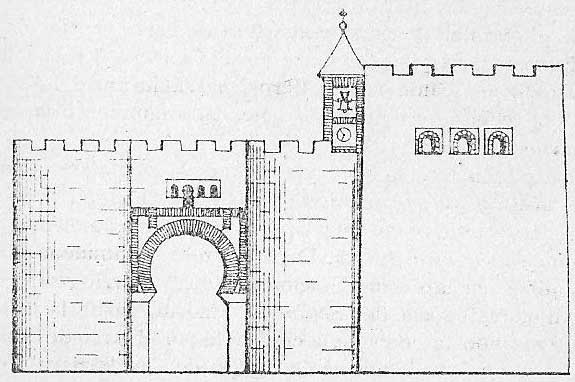John started from Madrid to embark at Barcelona on Wednesday, the 6th of June, 1571, at three o’clock in the afternoon. He was accompanied only by his Master of the Horse D. Luis de Córdoba, his gentleman D. Juan de Gúzman, the secretary Juan de Soto, the valet Jorge de Lima, a caterer, a cook, two D. Juanillos or fools, two couriers, a guide and three servants, in all fifteen horses. The rest of his following and servants had been divided into two parties, one which went on ahead with his Lord Steward the Conde de Priego, and the other which followed under the chamberlain D. Rodrigo de Benavides. D. John had arranged this in order to set out more quietly, and to avoid the manifestations of the love and enthusiasm of the people of Madrid, which he well knew not to be to the taste of certain personages. His precaution, however, was useless, because the people got wind of his departure, and from the morning waited in the little square of Santiago, watching for his coming, and when he got to the gate of Guadalajara, the crowd was so great, that it overflowed into the country and extended all along the side of the road.
The magnificent Roman gate called Guadalajara still existed then, its strong blocks of rock united by an enormous arch with railings and balustrades of the same golden stone. Above this archway, and standing out bravely between two towers, was the beautiful chapel with two altars, one to venerate the figure of Our Lady, called la Mayor, the other that of a Guardian Angel, with a naked sword in his right hand and a model of Madrid in his left. All travellers used to pray there, and following the usual custom, D. John alighted and mounted to the chapel; and he appeared afterwards at the railing to bow to the people, who were acclaiming him, and such were the cries of blessing, good-byes and hurrahs, that, according to a writer of the time, “it resounded more than was necessary in some crooked ears.”
Rev. Fr. Luis Coloma, The Story of Don John of Austria, trans. Lady Moreton, (New York: John Lane Company, 1912), Book III, Ch. IV, pg. 231 & 232.
Stories on Honor, Chivalry, and the World of Nobility—no. 629











